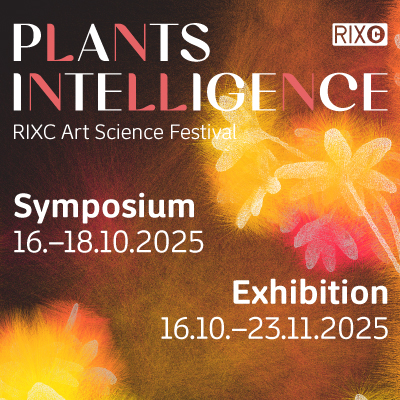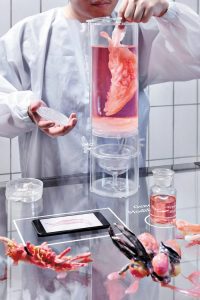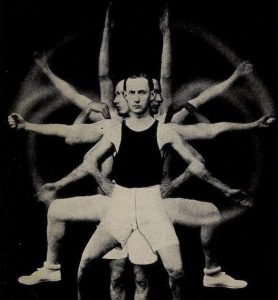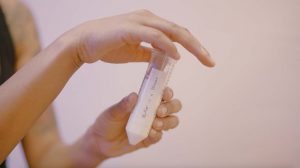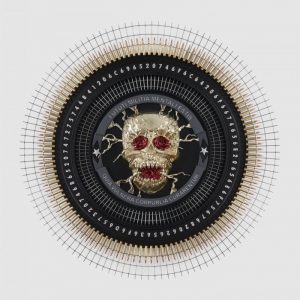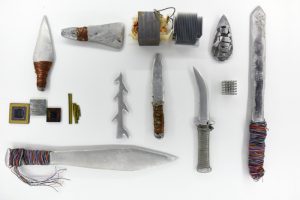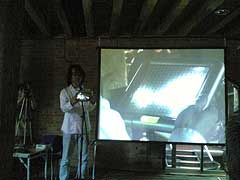 I don’t like it but i can’t help it: this blog is turning into Toshio Iwai’s fanclub website.
I don’t like it but i can’t help it: this blog is turning into Toshio Iwai’s fanclub website.
He started his keynote presentation at Futuresonic right from the start: his childhood. He was born in 1962, in the Aichi Prefecture. He then showed us his first drawings (fish and lips!), then listed the presents his parents got him over the years: a book about insects that fascinated him, another one about light, heat and sound. One day his mother told him she’d stop buying him toys, instead she provided him with materials, tools and books about making things. So he built stuff and made more drawings for weird inventions he never really realised (like an umbrella you wouldn’t have to hold because it would just sit on your shoulder.
He made little flipbooks on the pages corners of his school notebooks. Time passed, he learnt computer programming and made more elaborate flipbooks using video frames printed on paper.
In the early ’80s, he discovered the prehistory of cinema. I’ve always been fascinated by it as well, but aren’t we all?
He started to add contemporary technologies (copying machine, video device, computer) to the old devices. For the Copy Phenakisti-scopes to the good old Phenakistiscope. Iwai used a copy machine to create images (his hand, peanuts, scisors, etc.) that he then glued onto the slotted disc. The nicest experiment he did with these retro toys, was his take on the Zoetrope: he put physicall clay models, rather than drawings, into the Zoetrope canister.
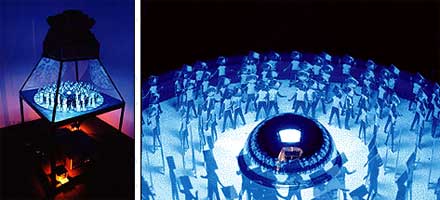 Time Stratum
Time Stratum
He then tried to evolve these small experiements into bigger installations. He showed us an amazing video (doubly amazing because these works were done in the ’80s!) Time Stratum. He placed 120 paper human figures on a spinning disk, set up a video monitor above them, while strobing the light down, the paper figures seemed to live and move.
He got interested in music because he needed soundtrack for his works. He started using CDs or asked friends to compose some music for him, but he wanted to do everything himself.
So once again he turned to a retro toy: the hand-cranked antique music box that uses paper punched cards. Iwai found this device interesting, it made the music “visual” and thus better understandable to him.
In 1990, inspired by this technology, he created a computer game called Music Insects. In the game, the player can make marks with a mouse, which are akin to the punches on the music roll. Little insects walk along the screen. They have their own sound. They are kind of walking musical instruments that emit noises each time they meet a mark. You can choose up to four bugz at a time and each one plays the role of a different instrument.
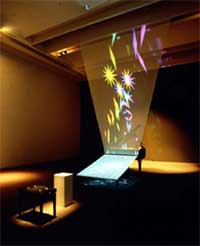 Still, Iwai was unsatisfied with his “drawing software”, he wanted to explore sound in a more tangible way. So he came up with Piano as Image Media. The user operates a trackball to draw lighted dots on a grid. The flashing dots move, and as soon as they come close to the piano they accelerate and strike a key. With the sound of the piano, a three-dimensional figure pops out of the keyboard. The audience-drawn shapes play the actual piano. The sound then generates moving colors and figures.
Still, Iwai was unsatisfied with his “drawing software”, he wanted to explore sound in a more tangible way. So he came up with Piano as Image Media. The user operates a trackball to draw lighted dots on a grid. The flashing dots move, and as soon as they come close to the piano they accelerate and strike a key. With the sound of the piano, a three-dimensional figure pops out of the keyboard. The audience-drawn shapes play the actual piano. The sound then generates moving colors and figures.
He later collaborated wiht pianist Ryuichi Sakamoto for the “Music Plays Images x Images Play Music”, a concert that uses the system of Iwai’s piano piece and visualizes a musical performance by Sakamoto in real time.
As Sakamoto plays a small keyboard, the piano starts to play. A faint light gradually emanates from the piano. At a certain point, Sakamoto stops playing. However, the last musical phrase repeats itself automatically, slowly fading out.
When Sakamoto plays the piano directly. The light-images that visually represent each note of the musical piece begin to rise from within the piano. The images capture not only the timing of the notes, but every aspect of the music, including the length of the notes and their loudness.
Later on the dots of light fall on a second piano, the piano begins to play. The dots of light then rebound to their original position, striking the keyboard at fixed intervals. Depending on where the dots of light are placed, the pitch of the notes and the patterns of repetition change.
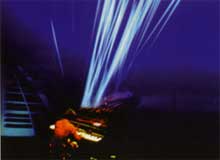
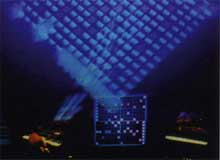
During his talk Iwai presented most of his works, i just wrote down the one that amazed me most. Chris has uploaded a video of the talk on you tube.
More of his projects: Composition on the table, Morphovision – Hacking Photon, Oto Kinoko (Sound Mushroom), Ugo Ugo Lhuga: Japanese Kids TV Show, Toshio Iwai performance at Sonar, Bloomberg ICE space in Tokyo.

